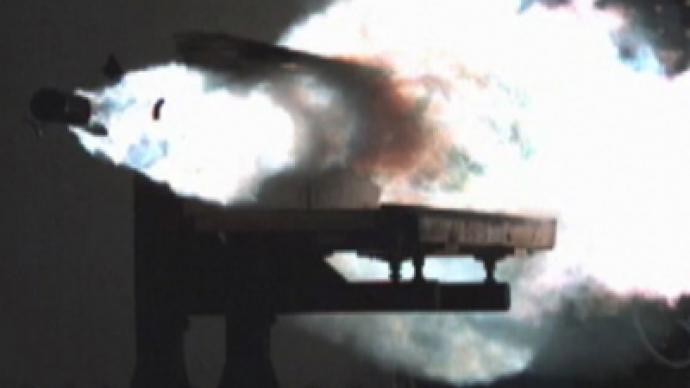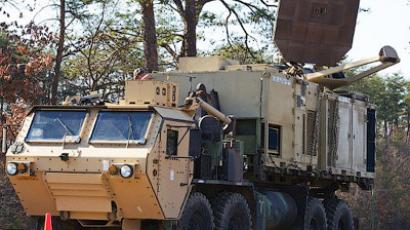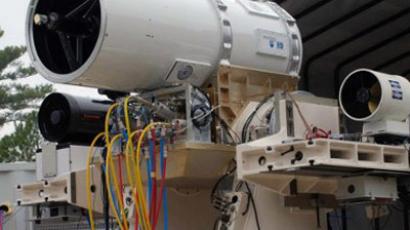Speed kills! US Navy targets hypersonic, GPS-guided bullets

Remember the old cartoons where a bullet could chase you around a corner? What if that bullet was fired at 5,600 mph from an Electromagnetic Rail Gun? If the US Navy has its way, these sci-fi,supersonic GPS-guided projectiles could soon be a reality.
The futuristic munitions come as part of the US Office of Naval Research’s (ONR) Hyper Velocity Projectile program, which was announced on July 19. The agency's researchers hope to develop equipment that would allow high-velocity weapons to accurately strike far-away targets – without having to depend on rocket propulsion, Military and Aerospace Electronics reports.The Navy hopes the supersonic ammunition, with a potential “in-flight retargeting” capability, will be compatible with both its conventional guns, like the Mk 45 155-millimeter gun systems, as well as its experimental 20–32MJ railgun systems, which fire projectiles using electrical energy instead of chemical propellants.The bullets are slated to be two feet long, weigh somewhere between 20 and 30 pounds, and have a range of 30 to even 200 miles depending on the system deploying them.In order to bring this project to life, the Navy “will explore technologies related to extended-range guided projectiles for Naval Surface Fire Support and exploit recent advances in miniaturized electronics, guided projectiles and mortars, and warhead technology for small UAV [unmanned aerial vehicle] launched munitions.”The hi-tech munitions fit in with what Former Navy chief Adm. Gary Roughead described last year as the drive to end "the dominance of the missile,” Wired reports. Once China’s DF-21D – the world’s first anti-ship ballistic missile – reached initial operational capability in 2010, the US has been scrambling to neutralize technology that could sink multi-billion dollar US carriers in the Pacific.As the Navy works to circumvent China’s developing “carrier-killer” deterrent, it says the high-velocity projectiles will not need rocket motors, a change that would cut down on both collateral damage and munitions costs.Although the ONR plans “a multi-stage program leading to full-up live-fire demonstrations of the technology” by the end of 2017, the Navy’s track record with such high-tech projects is less than stellar.The Navy has already poured $240 million into its railgun project since 2005, but practical versions won’t be ready until 2017, and it might be years more before they are operational on the water.So while the railguns and their GPS-guided bullets will fire at more than seven times the speed of sound, development of the game-changing technology necessary will likely crawl along at a snail’s pace.














